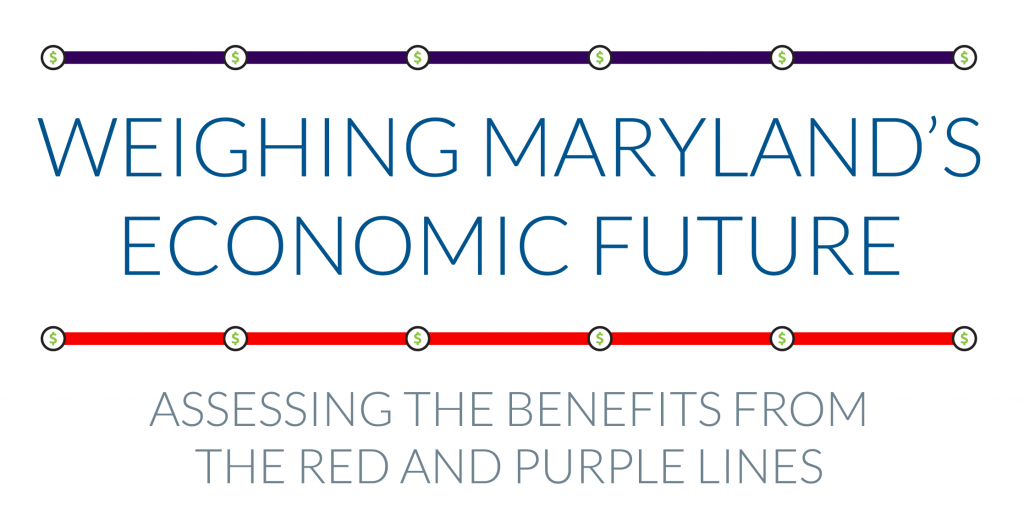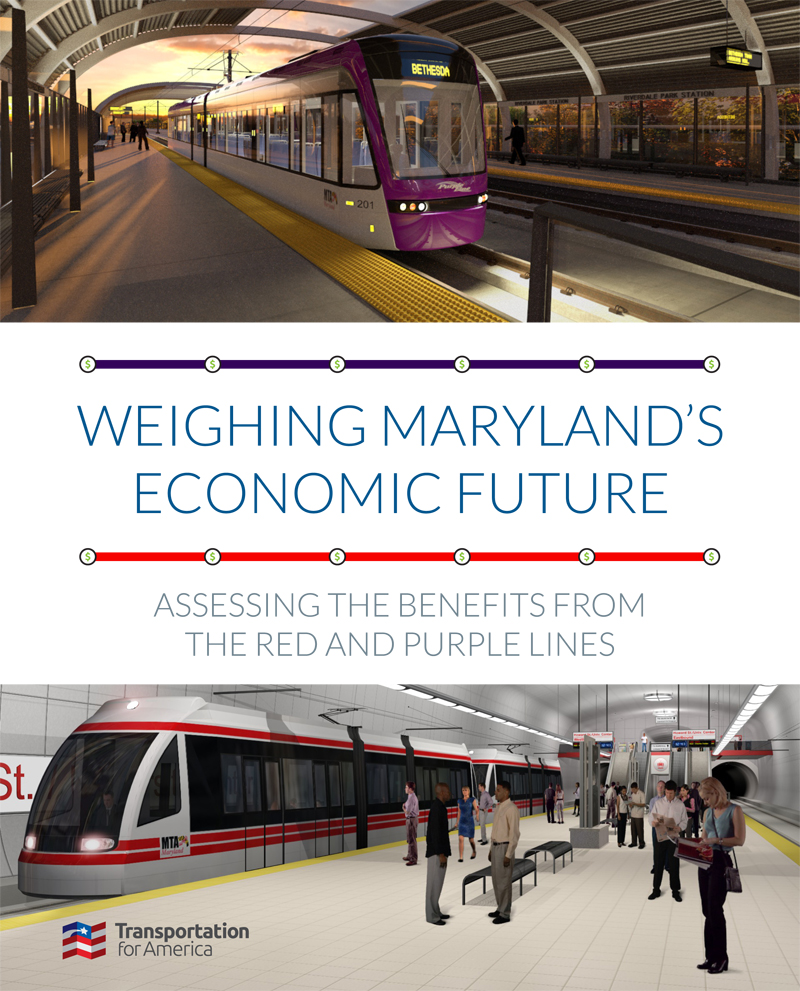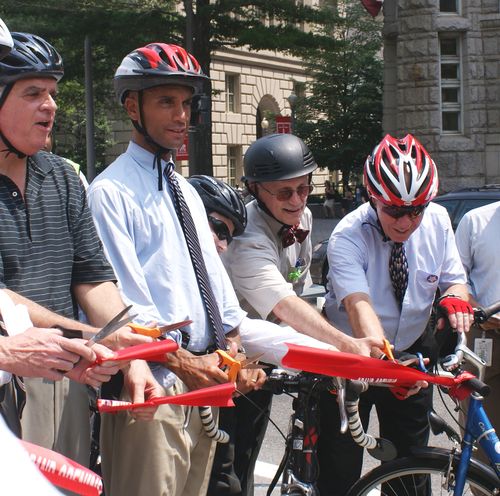
Report puts the two lines in national context as governor weighs whether to fund them
The two rail transit lines being considered by Maryland Governor Larry Hogan and his advisers could help leverage billions of dollars in income, increased productivity and expanded tax base, according to a new analysis from Transportation for a America.
The report is the first attempt to assess the full range of potential economic benefits from construction of the Purple Line, connecting Maryland’s Washington, D.C. suburbs, and the Red line, providing east-west connections between Baltimore and its suburbs.
“Given the number of regions across the country contemplating similar investments, we wanted to offer this report as a template for how to make a comprehensive assessment of economic impacts,” said James Corless, director of Transportation for America. “We found that the Red and Purple lines would have a payoff many times their cost and would yield economic results like few other investments being contemplated in Maryland.”
Among the findings:
- The two lines would generate more than 35,000 direct and indirect jobs, increasing household income by over $1 billion;
- Associated productivity increases from more reliable commutes and better access would raise incomes by another estimated $2.2 billion;
- Increased real estate development potential would raise the tax base of the affected jurisdictions by billions of dollars — $12.8 billion for the Purple Line alone.
- Families can save more than $900 a month if they can get by with one or fewer cars thanks to high-quality transit service;
- Nearly 250,000 jobs will be accessible via rail transit in the Baltimore region, and 290,000 in the D.C. suburbs.
Additional benefits explored in the report include time savings for future commuters versus driving in traffic; the potential to retain employers who would have access to a larger pool of workers with reasonable commute options; and the long-term payoff of training local workers for higher-skill jobs.
“The Purple Line connects our region and makes Maryland relevant in the competition for talent and employers,” said Ilaya Hopkins, vice president for public affairs at the Montgomery County Chamber of Commerce. “It provides greater access to opportunity for students, residents and employers in our state’s two most populous counties and connects major centers such as the University of Maryland College Park with multiple employment hubs. This report, published by a national organization, highlights the positive impact of the Purple Line for the state and the region.”
“Baltimore’s Red Line will transform the city’s rail transit into a connected, comprehensive system,” said Donald C. Fry, president and CEO of the Greater Baltimore Committee. “In doing so, it will attract businesses, generate jobs and have a significant long-term beneficial impact on the economy of the city and region.”
The report’s conclusions may have special relevance for Baltimore as the city attempts to address the economic struggles that helped fuel the recent unrest, Corless noted.
“Older cities like Pittsburgh and Baltimore don’t turn around without bold — but smart — investment in the future,” said former Pittsburgh Mayor Tom Murphy, who helped lead the city’s comeback in the 1990s and early 2000s. “Like Pittsburgh before it’s recent turn-around, Baltimore has the precursors for success in its medical and educational assets. Investing in an excellent transit system will help tip the scales toward economic development while helping residents of all income levels get to the jobs that will follow.”
The full report is available online at https://t4america.org/maps-tools/maryland-transit-report/
View the Report




